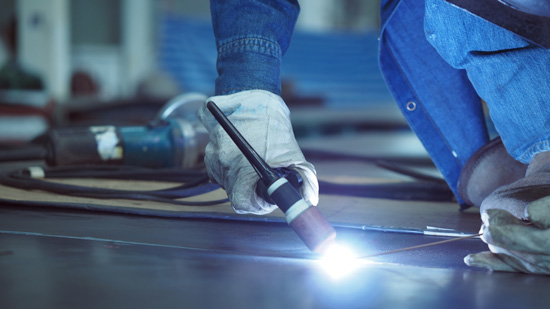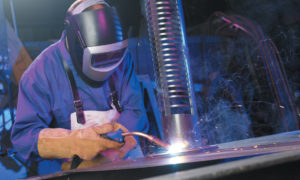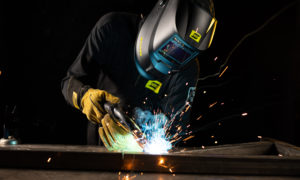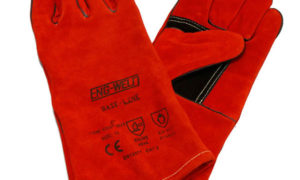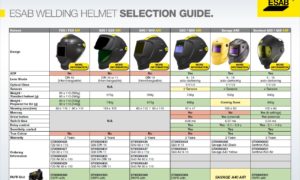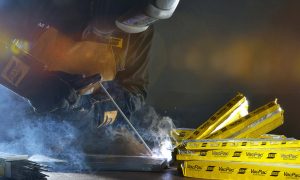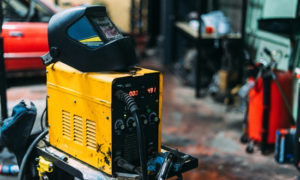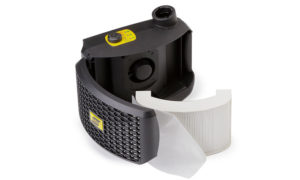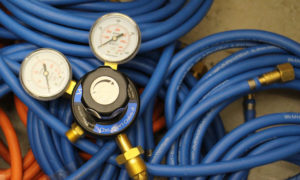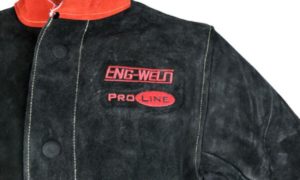Knowing where to start with TIG welding can seem like a daunting process but we’ve made it easy with everything you need to know about choosing a TIG welder.
What is TIG welding?
TIG welding, which stands for Tungsten Inert Gas welding and is also known as GTAW (Gas Tungsten Arc Welding) is a type of welding that uses a non-consumable tungsten electrode to produce the weld. It differs from MIG welding through how the arc is used, for example MIG welding uses a wire to create the spark needed for welding, whereas TIG welding uses rods of tungsten to weld metals together.
Engweld supplies everything you need for TIG welding including TIG Torches, TIG Torch Spares, TIG Welding Rods, Tungsten Electrodes and TIG Welding Gloves.
What works for my budget?
Like any piece of equipment, you generally get what you pay for in terms of machine quality and durability, however what you set your budget as also depends on how advanced you need the machine to be. A classic TIG welder like the Lincoln Aspect 200A AC/DC is typically at the more affordable end of AC/DC TIG machines, whereas a multi-process machine such as the ESAB Rebel 205ic AC/DC or Parweld XTM211Di can be more costly thanks to there advanced capabilities.
What materials can be welded?
TIG welders have the benefit of allowing the welding of more metals and alloys than any other process, meaning materials like stainless steel, aluminium, magnesium, copper, brass, bronze and even gold can be welded.
AC/DC vs DC only TIG Machines
With AC/DC machines your options are fairly unlimited as you can switch the current type depending on the metal you are working with, while DC only machines are used most commonly for metals like mild steel or stainless steel. If you are welding aluminium then you would need an AC/DC/ TIG welding machine for this. It also worth noting which tungsten’s you may need depending on what material you’re welding. Thoriated (red tungsten) for mild steel and stainless and Zirconiated (white tungsten) for aluminium.
What benefits are there using a higher frequency on AC tig?
Combined with adjusting the balance control to increase the electrode negative polarity—resulting in deeper penetration and tungsten that doesn’t ball up — high AC frequency provides the ability to weld very tight joints with good penetration and without the risk of laying down too much filler metal.
What is pulse welding?
Pulse welding is welding that alternates between a high and low current. This reduces the overall heat input and spatter while ensuring greater resistance to a lack of fusion. The benefit of pulse welding is that you can weld both thicker and thinner metals without burning through them.
Are there any benefits of 3 phase over single phase?
Comparing single-phase vs three-phase power, three-phase power supplies are more efficient. A three-phase power supply can transmit three times as much power as a single-phase power supply, while only needing one additional wire (that is, three wires instead of two). This allows for more amperage on a machine, meaning thicker materials can be welded or allows for a higher duty cycle meaning longer weld times.
What is the difference between Lift TIG and HF TIG?
Lift TIG and HF (high-frequency) TIG are two different ways of starting the arc that allows welding between the tungsten rod and the work material to take place. With Lift TIG, the tungsten electrode must be touched to the metal and lifted away a little. When the tungsten touches the metal the current is low so the electrode and workpiece do not stick together. It is only when there is a gap between the two that the machine senses the break and supplies the full current to start welding correctly.
HF TIG however occurs when the welder places the tungsten rod close to the metal and presses the torch trigger to start the arc and begin welding. HF TIG is an option available on most professional TIG machines which allow you to choose between Lift and HG to start the welding process.
Why should I use a TIG pedal with my TIG welder?
Simply put, having a TIG pedal allows you to have more control over the amperage being used and therefore more control over the accuracy and quality of the final weld.
See the range of TIG Foot Pedals at Engweld.
Input voltage & electrical supply – What you need to know
Electricity supplies can vary across the UK so before you begin TIG welding it is important to know where you will be carrying it out. Standard UK mains outlets supply 230v, however you may be limited by a smaller voltage available in your workspace so also check what amp rating you have to calculate the power needed to run your machine and ensure you have enough. To know what supply you will need, you can use the rule of 1 to 10. 1A in the supply means 10A out, therefore a 240A machine would need a 24A input etc.
IP23 Rating: IP23 vs IP23S
AN IP rating refers to the Ingress Protection rating of a TIG machine which provides information on
The level of protection it has from foreign particles like dust or water. IP ratings can vary from the machine having no protection to protection from a particular distance or full protection from strong jets of water or even high levels of pressure when submerged. The additional letter given on an IP23S rating refers to how the machine was tested with an S meaning the machine was stationary during the water test.
TIG Welding Gas – See our list of our recommended welding gases depending on your welding process and the material/thickness you’re welding. Engweld also stocks welding gas regulators including single-stage, multi-stage, Nevo, and high-pressure gas regulators. You can buy TIG welding gases from our parent company Energas.
Download our gas selector guide to help you choose the right gas for your TIG welding.
Everything to know about warranty
When buying a TIG welder you must ensure that you have the right cover so you are protected if issues occur. A warranty will mean that you get the correct aftercare you need to fix problems and keep your machine in good condition. By purchasing from Engweld and getting our warranty, you will have access to full service & repair facilities at our branches and even the benefit of on-site visits to get it fixed.
Engweld is a key distributor for all leading brands of AC/DC & DC TIG welding machines including ESAB, Lincoln Electric, Oerlikon & Fronius. We stock a range of portable & industrial TIG welders to provide the correct solution for your welding application. Please use the filters provided on the left to show either AC/DC or DC tig welding machines or to filter between air-cooled and water-cooled options. Contact your local branch using our branch locator if you cannot find the TIG welding machine you’re looking for.

